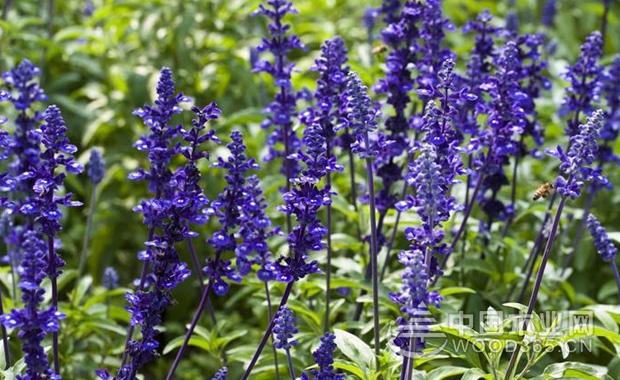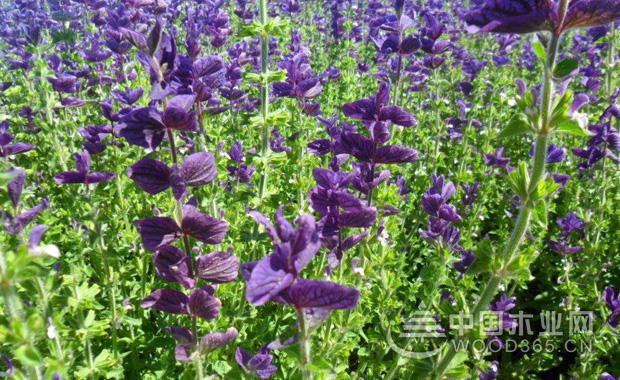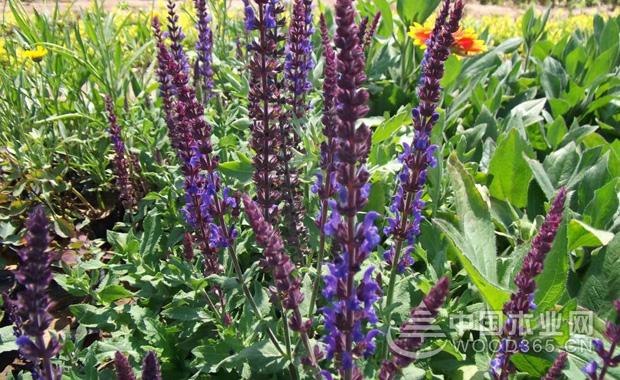Blue sage, also known as a string of blue, white sage, perennial herbaceous flowers, often used as annual flowers; plants are clustered; stems are quadrangular columnar, and hairy, slightly woody, sub-low wood Leaves opposite, long oval, 3 cm to 5 cm long, gray-green, leaf surface with embossed texture, and wrinkled, grayish white, fragrant and pungent; long spikes, large amount of flowers. This article focuses on the maintenance methods of blue sage sage for the reference and learning of the majority of flower friends. Blue sage is warm, moist and sunny, and has a strong cold resistance, but it is hot and dry. First, sowing seedlings Seeds are about 920 capsules per gram. Generally, 200 or 288 plug trays are used for sowing. The medium is generally selected to be imported nursery grass charcoal or disinfected domestic nursery grass charcoal, and the pH should be 5.5 to 5.8. After sowing, it is covered with a thin layer of vermiculite and then covered with a film. The germination temperature is 20 ° C to 23 ° C, and the germination days are 5 to 8 days. The radicle of the first stage of germination appears and roots begin to form. There is no need to apply fertilizer at this stage, but it is very important to keep the seedling medium moist, which requires a certain amount of light. The film is gradually removed after emergence. Use 1000 times chlorothalonil or a nail to prevent rickets every week, and spray continuously for 2 to 3 times. In the second stage of germination, rooting continues, stems appear, and cotyledons have spread. Maintain proper humidity to prevent over-wetting, and apply water-soluble fertilizer with a ratio of NPK to 20-10-20. In the third stage of germination, the root can be inserted into the cavity of the plug and several true leaves appear. Increase the concentration of fertilizer, control the humidity and temperature, the temperature is reduced to about 20 °C, and some light is needed to prevent the seedlings from growing at this stage. In the fourth stage of germination, the roots are clustered and there are 2 to 3 pairs of true leaves. Continue to increase the fertilizer concentration, the temperature and humidity are the same as the third stage, properly control the water, strengthen the ventilation, still need to prevent the length, prepare for transplanting. Second, transplanting the basin When the true leaf of the plant reaches 2 to 3 pieces, the transplanting of the upper pot begins. Generally, the nutrient meal of 12 cm to 13 cm is selected for transplanting, and the substrate is selected to be loose and well ventilated with organic fertilizer and compound fertilizer. When the plant is planted with 4 pairs of true leaves, 2 pairs of true leaves are removed and the lateral branches are promoted. Third, cultivation points The temperature after the upper basin is lowered to 18 ° C, and can be reduced to 15 ° C in one month. If the temperature is below 15 °C, the leaves will yellow or fall off; when the temperature is above 30 °C, the leaves will be small and the plants will stop growing. The water masters “do not dry or pour, but pour throughâ€. When it is hot in summer, pay attention to drainage and flood control. Apply fertilizer every 15 days or so. The seedling stage is mainly nitrogen fertilizer. After the bud, phosphorus and potassium fertilizers are added. If you do not leave seeds after flowering, you should cut off the residual inflorescence in time to continue to blossom. Fertilization is applied for a long time by diluting 1500 times of ammonium sulfate to change the leaf color, and the effect is better. Do not apply urea at low temperatures. In order to make the roots of the plants strong and the leaves are flourishing, it is very important to continuously fertilize them. 100 ppm of the compound fertilizer containing calcium and magnesium is applied once a month. The light is sunny and the environment needs to be properly shaded during the hot summer months. Fourth, pest management Common pests of pests and sages include whitefly, aphids, etc., which need active prevention and control. Common diseases of the disease sage are frostbite, leaf spot and so on. When the disease occurs, it can be sprayed with 50% thiophanate WP 500 times. Summary: The above is about the introduction of blue flower sage cultivation technology, I hope everyone can exchange the maintenance method of blue sage. Rouge,Lipstick Makeup,Pink Lips,Shine Loud Liquid Lipstick Guangzhou Boxuanya Cosmetics Co., Ltd. , https://www.bxycosmetic.com

